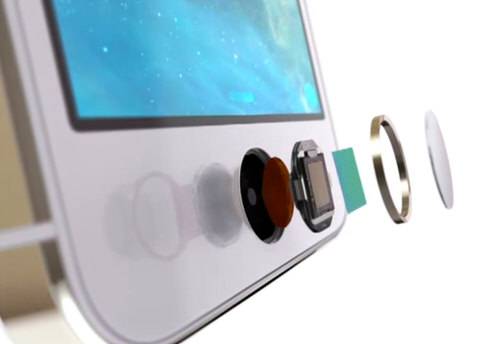
Say goodbye to pin codes or swiping to unlock. Apple’s new Touch ID will use human fingerprints to unlock iPhone 5S handsets with a single touch. According to the company, it comprises the most advanced hardware and software it has put in any device.
How Touch ID Works
Touch ID’s motive is to square two opposing factors in one fell swoop: people’s need to lock down their handsets and their desire to avoid cumbersome processes, like incessant pin code entry.
Apple’s attempt to tackle this problem comes via a new Home button that acts as a fingerprint scanner. It features a sapphire crystal overlay that not only protects the underlying sensor, but works as the lens. The scanner essentially captures an extremely high resolution image (of the sub-epidermal layers of your skin at 500 pixels per inch), which the software uses to detect and analyze specific micro points in the print and identify the user.
The button—which shed its familiar square icon—sits inside a shiny steel ring. This border isn’t just decorative. The ring is an activation mechanism that detects when a finger is present and tells the phone to begin scanning.

A natural (and indeed horrifying) thing to wonder about is whether a criminal could access a person’s iPhone by, say, chopping off his or her finger and placing it on the button/scanner. But no, that won’t work, notes The Wall Street Journal. It points out that modern scanners look for vital signs. A severed finger obviously would be useless in that grisly scenario.
Apple Puts A Finger On Security, Privacy & More

Touch ID seems intentionally designed to minimize the fuss and hassle usually necessitated by smartphone security. Fingers can be placed in any direction and the scanner can read a variety of fingerprints—from the same user or different ones. There’s no specific training period. The accuracy of Touch ID progressively improves over time. And if it should ever fail, users can still access the device using a password or pin.
The other major factor is privacy. Apple has addressed that too. The company made a point of emphasizing that the fingerprint data is not only encrypted, but stored in a secure, separate area of the A7 chip that’s walled off from all other software. Neither Apple servers nor other mobile apps can access it.
However, transactions green lit by this security are another matter. Thanks to Touch ID, your fingers will be able to approve iTunes purchases, including App Store and iBooks transactions.
This may seem like a modest tidbit, but it could usher in a major development: If fingerprint-authenticated transactions prove popular, it’s quite likely other shopping apps and services will want to get in on biometric authentication. If that happens, we could be looking at a Touch ID-fueled wave of smartphone-enabled e-commerce (at least someday).
The High Stakes of Smartphone Security
Fingerprint scanning may seem like an exotic technology, but that didn’t stop Tim Cook and his crew from pursuing it. Apple is not the first mobile device makers to try, as anyone who used a 2011 Motorola Atrix can attest.
In the case of the Atrix, the sensor read fingers as they swiped across the back of the phone to unlock. Motorola’s idea seemed like a good one at the time since it played off a typical gesture that users were familiar with and added an extra layer of security. Unfortunately, the system was frustratingly inaccurate and error-prone.
Samsung pushed the security envelope in a different way with facial recognition. But Face Unlock has not been a panacea. Shortly after it launched last year, some Galaxy users reported that they were able to use photographs to gain access.
It’s too early to tell if Apple’s Touch ID can be gamed, spoofed or hacked. But there’s little doubt that people will be lining up to try. And if they succeed, Apple could stand to lose a lot in reputation and transactions—which could be what they’re really protecting here.
Feature and fingerprints images screen captured from YouTube video by NDevil TV. iPhone image courtesy of Apple.

















